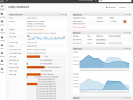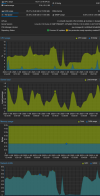Hi,
I am a newbie with proxmox and I want to set up my homelab. Initially I wanted to just run OPNsense on a machine I built myself. It has enough hardware capacity. My question is if I should go for OPNsense blank or with Proxmox VE and if it makes sense to run PFsense at the same time and how much security is affected by that or how do I setup it correctly, basically the hardware setup is very simple. I just want a hardware firewall before my workstation. I wanted to use OPNsense + Zenarmor + Proofpoint, but now I think how hard it would be to configure this elevated setup with Proxmox and additionally Pfsense and maybe even the Proxmox Mailserver on top as VM inside Proxmox VE. Is there any comprehensible guide for doing so securely? What do I have to consider? Any help appreciated.
Also which one do you judge better OPNsense or PFsense? I could also go for a subscription with PFsense Plus for example.
Thanks a lot!
I am a newbie with proxmox and I want to set up my homelab. Initially I wanted to just run OPNsense on a machine I built myself. It has enough hardware capacity. My question is if I should go for OPNsense blank or with Proxmox VE and if it makes sense to run PFsense at the same time and how much security is affected by that or how do I setup it correctly, basically the hardware setup is very simple. I just want a hardware firewall before my workstation. I wanted to use OPNsense + Zenarmor + Proofpoint, but now I think how hard it would be to configure this elevated setup with Proxmox and additionally Pfsense and maybe even the Proxmox Mailserver on top as VM inside Proxmox VE. Is there any comprehensible guide for doing so securely? What do I have to consider? Any help appreciated.
Also which one do you judge better OPNsense or PFsense? I could also go for a subscription with PFsense Plus for example.
Thanks a lot!



